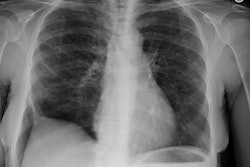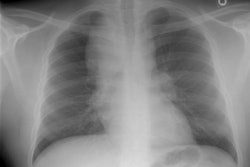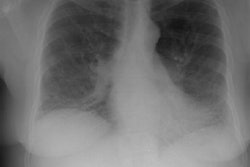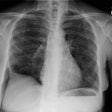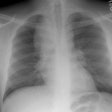Accuracy of high-resolution CT in diagnosing lung diseases.
Bonelli FS, Hartman TE, Swensen SJ, Sherrick A
OBJECTIVE: The purpose of our study was to determine if high-resolution CT facilitates the diagnoses of three diseases that cause cystic air spaces in the lungs: pulmonary eosinophilic granuloma, pulmonary lymphangiomyomatosis, and emphysema. MATERIALS AND METHODS: Retrospective review of high-resolution CT findings in patients with pathologically proven pulmonary eosinophilic granuloma (n = 10), pulmonary lymphangiomyomatosis (n = 9), and emphysema (n = 10) and five control patients without cystic air spaces was conducted by two thoracic radiologists unaware of the pathologic diagnosis. After reviewing the scans, the radiologists made a diagnosis and indicated their level of confidence in the diagnosis on a three-point scale. RESULTS: High-resolution CT allowed the two radiologists to be confident of the diagnosis of pulmonary eosinophilic granuloma in 84% of CT scans, lymphangiomyomatosis in 79%, and emphysema in 95%. When confident, the observers were correct in 100% of the cases. Agreement between observers was good for confident diagnoses based on high-resolution CT scans of pulmonary eosinophilic granuloma (kappa = .77), lymphangiomyomatosis (kappa = .88), and emphysema (kappa = 1). Distribution of cystic changes differed on high-resolution CT scans for lymphangiomyomatosis and pulmonary eosinophilic granuloma. No consistent distribution pattern was observed for emphysema. Lack of a perceptible cyst wall was unique to cases of emphysema. All patients with lymphangiomyomatosis lacked nodules in the intervening lung parenchyma, whereas most patients with pulmonary eosinophilic granuloma had parenchymal nodules. CONCLUSION: High-resolution CT can help radiologists reliably diagnose pulmonary eosinophilic granuloma, lymphangiomyomatosis, and emphysema.
